In this doc, I will show you how you can easily create your WooCommerce product feed for Google Review.
Follow these easy steps to generate a WooCommerce Product Feed for Google Dynamic Display Ads.
Step 1: Create a New Feed and Map Your Product Attributes #
Go to your product feed dashboard.
Click on the Add New Feed button.
It will take you to the feed creation page.
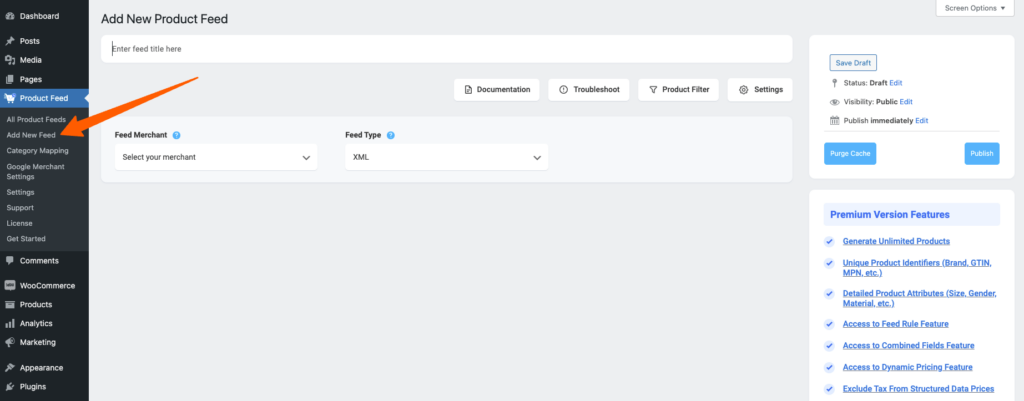
Now, here,
1. On top, you will get the option to add a title to the feed. Give your feed a name.

2. Just under the title, you will see an option to select your preferred merchant. Simply click on the Feed Merchant dropdown button and select your preferred merchant from the dropdown or you can search in the dropdown box.

Select your preferred merchant and all the required attributes will be loaded below.
Let’s select Google Dynamic Display Ads for this feed.

3. Here, you will see that only three attributes are listed, you can add any pre-made attributes or create a custom attribute to make the feed you need.
If you want to include pre-made attributes, you can click on the Add New Attribute button, and you will get a list of pre-made attributes. Select any of them and this attribute will be included in your feed.
Or you can add a new custom attribute by clicking on the Add New Custom Attribute button.
Step 2: Feed Configuration #
1. Scroll up to the top and here, you will see that there are four options, Product Filter and Product Settings.
- Settings
- Product Filter
- Troubleshoot
- Documentation
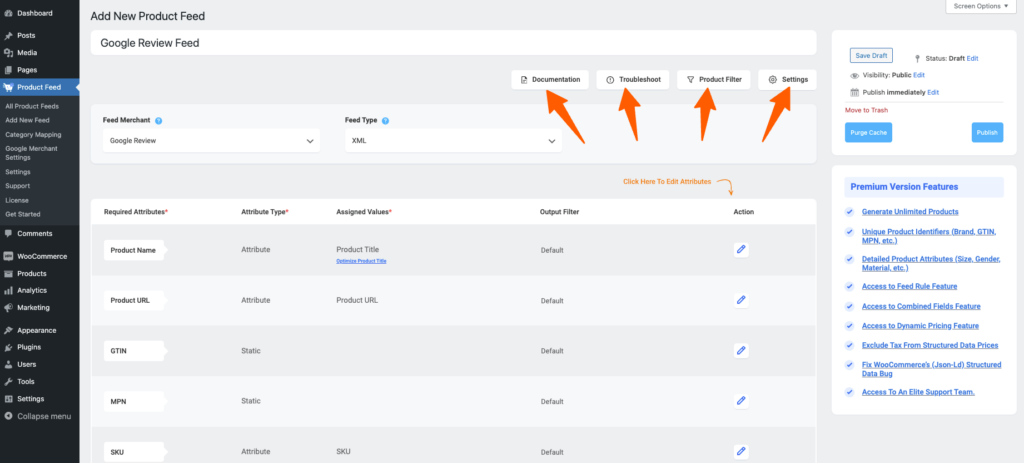
2. First, let us configure the features in the Product Settings. Click on the Product Settings button, and a drawer will open from the right side of the screen.
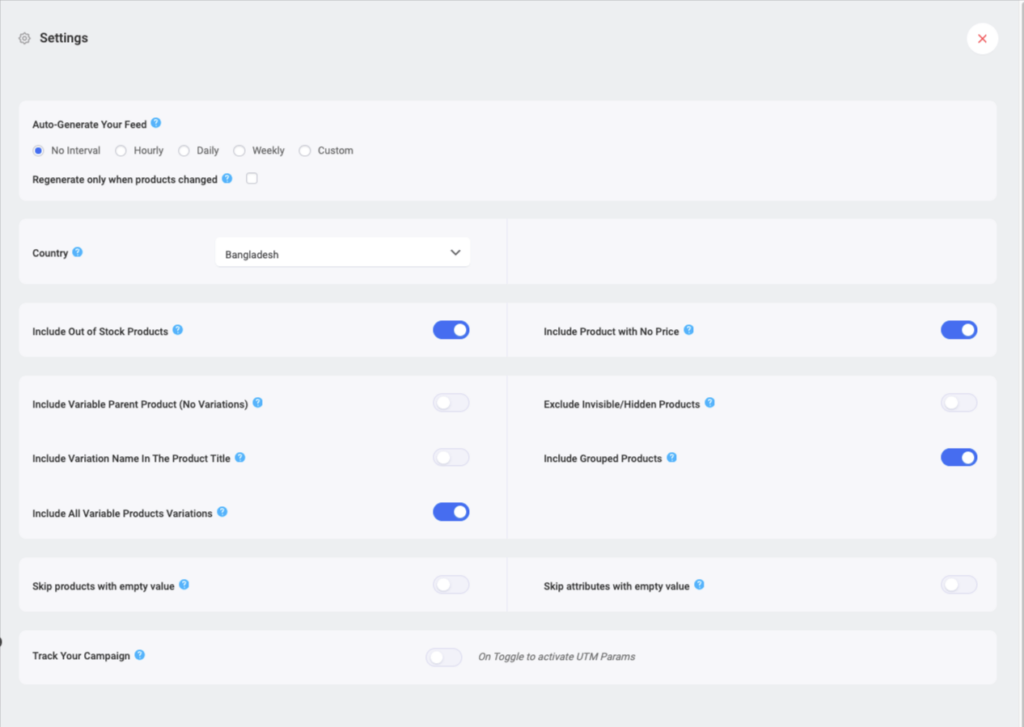
3. The first option you will see is Auto-Generate Your Feed.
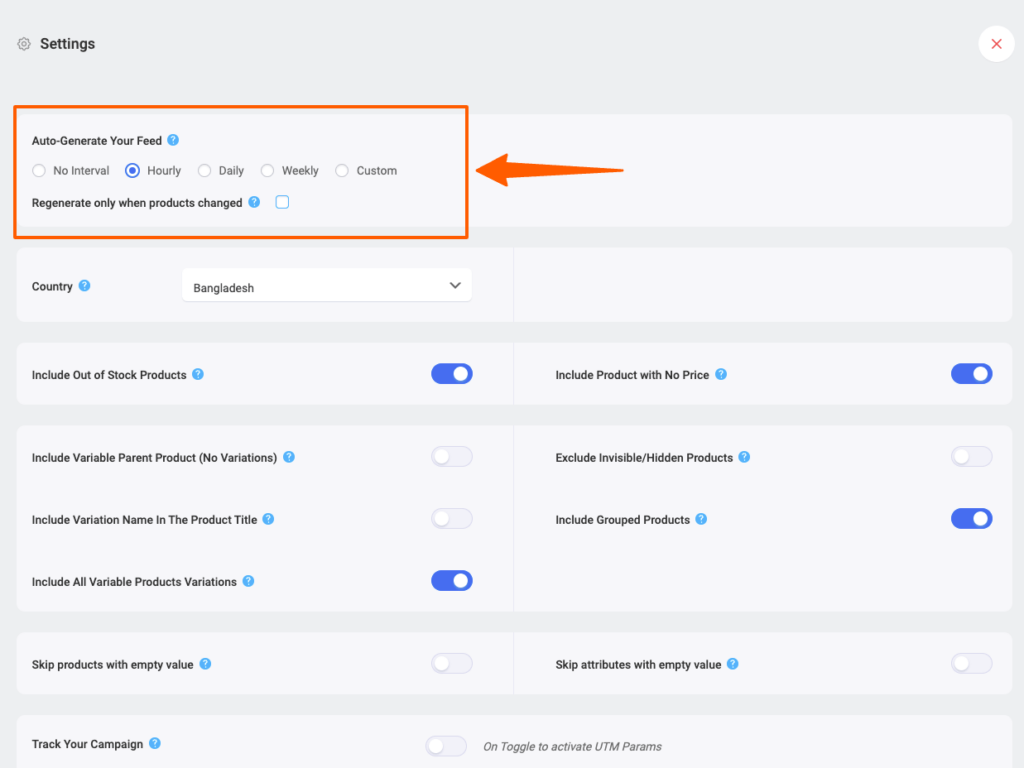
This option is used to schedule an auto-update of the feed after certain intervals. Choose an option to set an auto-update or leave it as “No interval” if you do not want to set an auto-update of the feed.
4. Next, use the following options as needed.
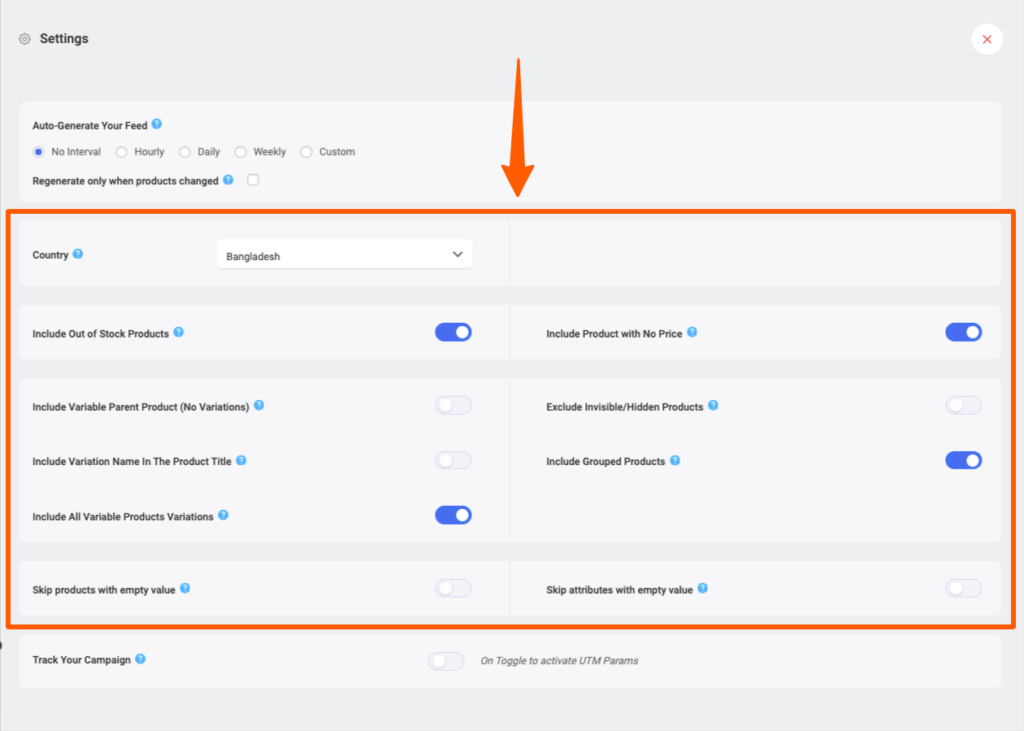
- Select Country/ Region
- Select a Region from this dropdown menu if you want to include the Shipping info in your feed. Once you select the region, you will have to insert the Shipping attribute to your feed to get the Shipping values.
- You can follow this doc to learn how to include the Shipping info in your feed.
- Include Out of Stock Products
-If you want to include the out of stock products, then you can enable the option.
-For this feed, let’s not use this option and keep its value as “No“. - Include Variable Parent Product (Without Variations)
-If you want to include the parent feed for variable products, then you can enable the option.
-Few merchants such as Google Shopping or Facebook don’t require you to submit parent products, however, there are many other merchants such as eBay MIP, that require you to submit product products in the feed.
-For this feed, let’s not use this option and keep its value as “No“. - Include All Variable Products Variations –
-If you want to only include simple products to the feed and no variable products, then keep its value as “No“.
-If you want to submit both simple products and variable products to Google Shopping, then choose its value as “Yes“.
-Let’s use this feature, and mark it as “Yes“, for this feed. - Include Variation Name In The Product Title
-Few merchants such as Google Shopping, suggest you add the variation term to the Product name in case you are uploading variable products, however, it is completely optional.
-So if you want to include the variant terms to the variable product names, then you can set its value as “Yes“.
-Let’s use this feature, and mark it as “Yes“, for this feed. - Include Grouped Products
-If you have Grouped Products, then it’s best to submit the parent product of the Grouped product you created.
-So you should mark this option as “Yes“. - Exclude Invisible/Hidden Products
-You might have certain products on your store that are marked as hidden or invisible on WooCommerce.
-If you want to generate feed for Simple products only, then you can mark this option as “Yes” to exclude invisible products from the feed.
-However, product variants are by default marked as Invisible on WooCommerce. So if you include variable products to the feed, then you should mark this as “No“.
-Since in this feed we are including product variants, we will not use this feature and keep it as “No“. - Skip any attribute if the value is empty
-Enabling this feature will exclude any attributes of a product if the attribute value is missing.
-For this feed, let’s not use this option and keep its value as “No“.
5. You can then find an option to add Track Your Campaign (Analytics parameters).
Use this option if you wish to add analytics parameters to product links on your product feed so that you can keep track of the products’ performance on Google Merchant Center.
6. Now, close the drawer and click on the Product Filter option. A new drawer will slide in from the right side of the window.
7. Click on the dropdown, and You will get the following options:

Choose the Products you want to include in the feed.
You may choose to include All Published Products in your store, or you may use one of the three filter options, Custom Filter, Category Filter, and Tag Filter, to include the products you require (or exclude the ones you do not want to include).
For a basic feed, you can keep it the same.
Step 3: Publish WooCommerce Product Feed For Google Dynamic Display Ads #
Now, that you’ve configured your feed, it is time to publish the feed.
Click on the Publish button on the right.
Click on the Publish button and your feed will start generating.
Once your feed generation is complete, you will be able to view or download the feed.
That’s it. Your WooCommerce product feed for Google Dynamic Display Ads is generated.
You can now send this feed to Google Merchant Center through the Content API method, which is a bit complicated process. Or, you can download and upload this file to your merchant account manually and list your products on Google Merchant Center.
Learn how to upload your feed to Google Merchant Center through the direct upload method.
Learn how to send your feed to Google Merchant through the Content API method.
You can have a look at this doc to learn more about the Google Dynamic Display Ads: https://support.google.com/google-ads/answer/6053288